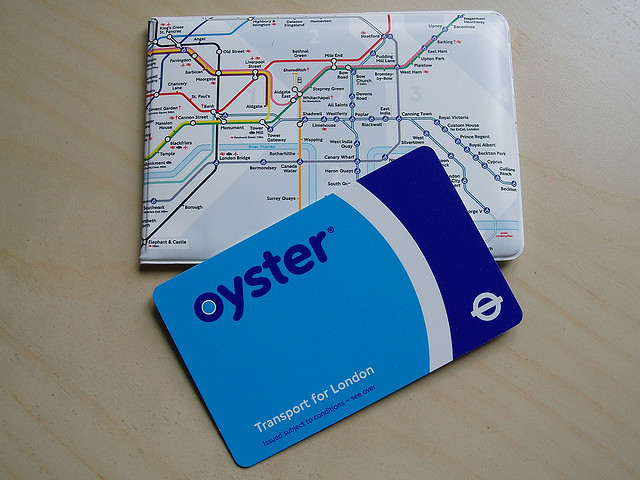
Nailing down the ever-changing fares, repairs, diverted lines, and schedules of public transportation can get complicated -- even for locals. While London's Underground, also referred to as "the Tube," is one of the more efficient and timely systems (especially compared to some in the U.S.), it's not without its quirks, tricks, and (seeming) treats. The same goes for the city’s buses and railways. But don't worry, we got you.
Read on for tips on how to save on Tube rides, avoid fines, pay less for train journeys, and not get stuck somewhere random after-hours. Heck, we'll even tell you where you can get connected underground and how to catch the train to Hogwarts! (We know that's why you're reading, muggle.)
First Things First: Tickets and Tapping
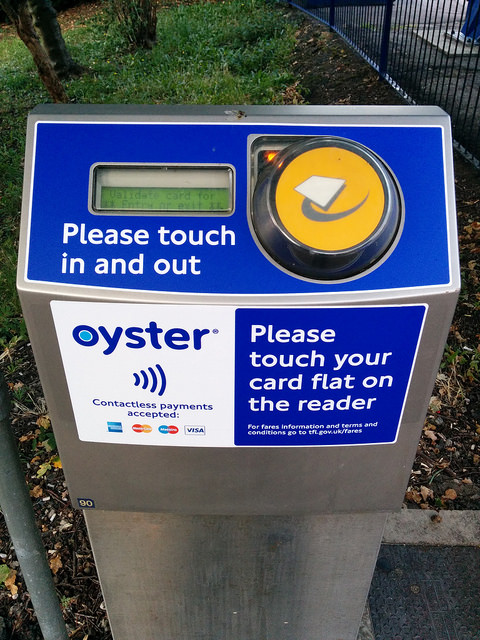
Oyster Cards vs. Visitor Oyster Cards vs. Travel Cards vs. Contactless
Payment
Even buying travel tickets is confusing in
London! Here’s an easy breakdown to ease the headache.
Oyster Card:This is the commonplace keycard-like
method used by most people living and/or frequently working in London.
Recommended for longer-term travelers, this option has a steep, but refundable, purchase fee of £5 ($7.50). Buy them at newsagents with certified Oyster Ticket Shops, or from the station’s ticket machines. These cards can be loaded and reloaded (or “topped up” as they say) with specific Pay-As-You-Go (PAYG) values, multi-day travel passes (like Travelcards), or a combination of both.
Visitor Oyster Card: This is pretty much the same as an Oyster Card, but with a non-refundable £3 ($4.50) “activation” fee. The only extra bonus to having this card is that, at the end of your trip, you can request that TFL cut you a check for any amount leftover on your card. If you buy an Oyster Card outside of London, this is most likely the card you’ll receive.
Travelcard: “Travelcard” just a fancy name for unlimited ride cards. While this may sound like the most hassle-free option, they are not without their own annoying quirks. They can be purchased in either One-Day or Seven-Day increments, for unlimited peak or off-peak travel, for either Zones One through Four or One through Six (the latter of which covers transportation to Heathrow Airport). Note that if you buy an off-peak Travelcard you will be unable to ride buses during peak times, even though bus fares do not follow peak/off-peak rules.
Contactless Payment:This is the newest, quickest, and — some say — cheapest way to get around since you don’t need to buy a tangible ticket (or
deal with their extra purchase and admin fees). Skip the admin fees associated
with Oyster Cards, top-up queues, and hassle by walking straight up to the
electronic card readers and tap in directly with your contactless-enabled
credit or debit card. To see if your card can go contactless check for the
special icon resembling the Wi-Fi symbol.
Tapping In & Out
To avoid looking like a total tourist (and
more importantly, maximum fare penalties) make sure you Tap In and Tap Out
whenever you use London’s Tube, DLR, Overground, and National Rail services.
This is how they calculate your fare — from point A to point B. Don’t let open
gates or the absence of gates (cough, the Overground, cough) fool you — you
still need to slap your Oyster card down on the reader until you get the green
light. Transportation for London (TFL) makes millions each year thanks to people who forget to Tap In and Out.
If you’re worried or particularly forgetful,
you can always stick to the buses and trams where you should only Tap In. (Does anyone else have a
sudden urge to dance right now?)
Tips for the Tube
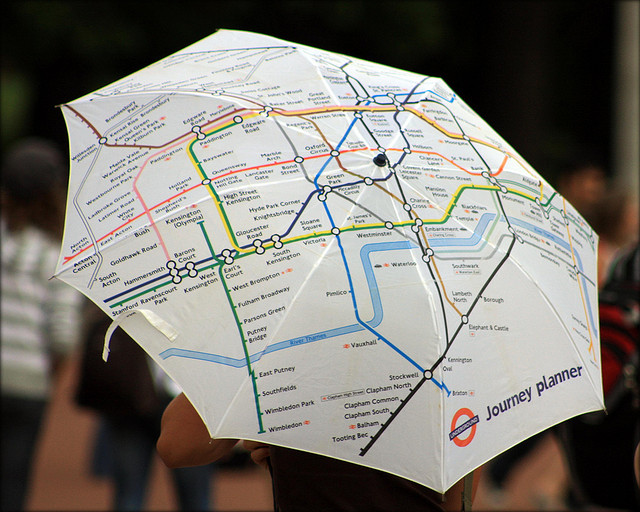
Compared to many subways systems on our side
of the pond, London’s Tube — with its clear in-car announcements, low, single-digit wait times (if any), clean and spacious cars, free newspapers, and efficiently
planned lines — may seem like a dream come true. That is, until you realize
that it’s one of the most expensive underground systems in the world. To a
foreigner, deciphering the Tube’s seemingly endless permutations of fares can
feel like you’re trying to crack the Da Vinci code.
Here’s some info to help you ride like a pro
and hopefully save some cash, too.
Watch Where You’re Going: The Danger Zones
With this one, the lesson is easy: The
farther you travel, the more you pay. It’s a painful truth. London’s
Underground is broken up into a whopping nine different zones, and the more
zones you travel through, the higher the fare. Luckily, most spots where
tourists (and most locals) travel lie within Zone One, Two, and occasionally Three.
If you’re planning a trip outside of central London, just make sure you have
enough credit on your Oyster card. Currently the most expensive ride in London is between Zone One and Watford Junction, ringing in at £13.70 or just over $20.
When You Ride Can Seriously Affect Your Fare
By now, you already know that not every
single ride fare is created equal. But not only does where you travel impact your fare, but so does when. To make fares more complicated, Tube travel is divided into
both peak and off-peak times, with travel during peak hours — Monday through Friday from 6:30 a.m. to
9:29 a.m. and 4:00 p.m. to 6:59 p.m. — sometimes costing nearly twice as much
as off-peak travel. Ouch. At least weekends and bank holidays are considered
peak-free.
The Perks of Pay-As-You-Go
There is a silver lining amidst all the
confusion, high fares, and zoning out: the glorious fare cap. Available only
for the throw-it-to-the-wind PAYG riders, fare capping essentially rewards
people who travel like maniacs several times a day all across London, even when using various modes of transportation. Not surprisingly, this can really benefit tourists. Depending on where
you’re going and how you’re getting there, the system will automatically stop
charging you once you’ve reach the max-out limit for your particular travel.
Again, there’s a staggering variety of caps and regulations; you can check them out here.
Another PAYG perk is a slice of fare grace for people whose cards don’t have enough value on them to pay for their complete ride. As long as you have enough on your card to pay for a single-ride Zone One journey, you’ll be let through the gates. If you ride outside Zone One, the difference is deducted and will appear on your card as a negative balance. You won’t be able to use the card again until you top it up, but it’s a nice (though dishonest) trick for those last-ever Tube journeys.
Tricks to Riding the Train
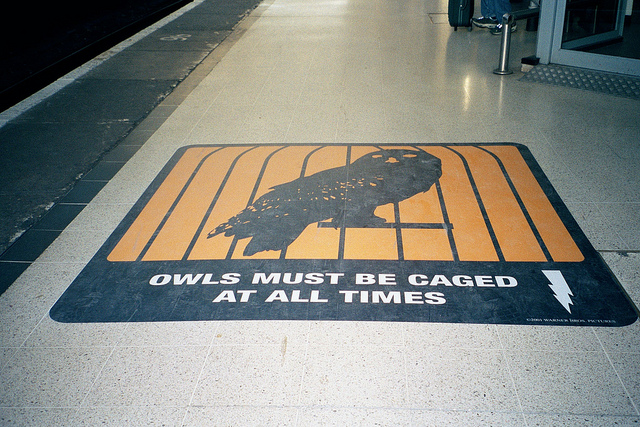
Taking day trips outside of London is highly recommended as London is no more an accurate representation of England
than New York City or Paris are of their respective countries. We are among the type
who still find train travel romantic, soothing, and — as you glide past England’s
vast green countryside — beautiful. What’s not pretty is the level of
privatization within the country’s rail lines, which equates to hefty research
to find out which lines will take you where you need to go, and from which
station. We’ll leave you on your own to figure that out, but in the meantime,
here are some money-saving tricks to get you motivated.
Snag Serious Discounts with a Network Railcard
If
you are planning on, or even thinking about, taking multiple day trips outside of
London to explore — say to locales like Canterbury, Brighton, Reading, or Cambridge —
consider buying a Network Railcard. This card, which currently costs £30 and
lasts for a whole year (like you need another reason to come back to London so
soon!), not only gives cardholders a 33-percent on most trips within certain areas of
London and most destinations within a two-hour radius of the city, but it also extends
the offer to up to three friends! Be sure to check the rules and restrictions
for when you can use the card before purchasing.
It (Usually, Almost) Always
Pays to Book in Advance
While
you may need to throw on your online detective hat for this one, on the whole,
booking train tickets in advance can save you an unbelievable sun.
Discounts vary by line, they’re sometimes only available for a specific departure
time, and they require at least 24- to
48-hour advance booking. Hunting down the specifics can be tedious, but it’s
worth it when you can look out the window and know you saved upwards of 50 percent. That’s snack and drink money for the ride!
Hang on to Your Tickets
Whatever
you do when you get on the train, find a safe and handy place to store your
ticket — you’ll need it at least two more times before you reach your
destination. Even though you’ll usually need your tickets to open the gates to
train platforms, you’ll most likely be asked to show your ticket to a ticket
inspector somewhere along the journey. You also may need it to get back through
the station gates once you’ve reached your destination as well.
Hogwarts, Anyone?
If you find yourself catching a train from King’s Cross, keep your eyes peeled for platform 9 and 3/4. You just might spot a luggage cart partially embedded into the brick wall along with a flying scarf just begging for a Twitter tag.
Getting to Know the Bus
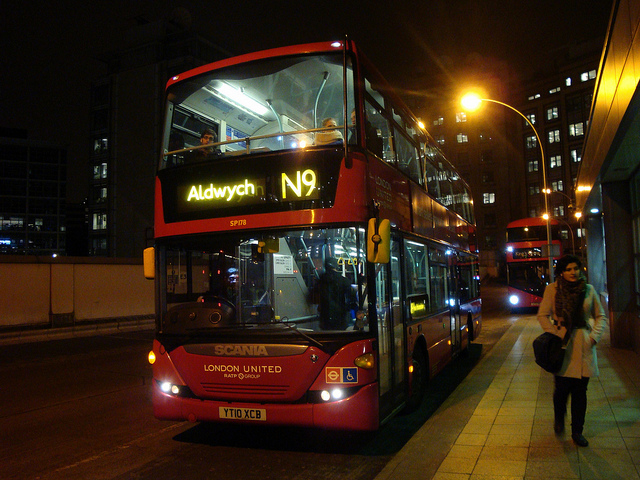
London
is famous for its red double-decker buses, though they don’t provide not a particularly
glamorous way of getting around. But this mode of transportation is a good way to see the city, if you can
figure out which bus to take where.
And it’s the only way to get home outside of a taxi if you stay out
late.
Bus Routes
At first glance, London’s bus maps seem pretty straightforward; you can see which
buses hit which major stops and sometimes even how long the expected travel is time between each stop. (We love that.) But navigating the bus system becomes a bit
more difficult when you need to get off on an unlisted, non-major stop. While
announced en-route, these smaller stops are often omitted from the large maps,
so be sure to find out which bus you need to be on and what the nearest major
stop is on the line.
Night Buses
Don’t
be that person who gets stranded late at night, desperately trying to make
sense of a night bus route — scanning the route map, and possibly waiting on the
wrong side of the road. Trust us. We don’t want to name names, but let’s just
say we know a few people who were unaware that the Tube completely shuts down
by 12:30 a.m. (although this is going to change in the very near future), leaving you with either an expensive cab ride or a ride on the night bus. Do
yourself a favor and know which bus you need to take to get home — before you
go out for the night, just in case.
All products are independently selected by our writers and editors. If you buy something through our links, Oyster may earn an affiliate commission.



